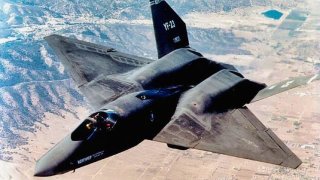Northrop YF-23: The Stealth Fighter the Air Force Almost Picked over the F-22
The Northrop YF-23A, unofficially named the Black Widow II, emphasized its stealth characteristics, and to lessen the weight while increasing the stealth, the Northrop-led team opted against using thrust vectoring for aerodynamic control that was used with the Lockheed prototype.
Summary: The YF-23, displayed at the National Museum of the U.S. Air Force, represents a pinnacle of design that narrowly missed becoming the USAF's premier fighter. In the late '80s and early '90s, it competed against the YF-22 in the Advanced Tactical Fighter program, aiming to replace the F-15 and counter Soviet threats. The YF-23 emphasized stealth and speed, featuring unique diamond-shaped wings and advanced stealth materials, making it nearly undetectable by radar. With two prototypes showcasing different engines, the YF-23 demonstrated superior speed, stealth, and armament capabilities, including "supercruise" for sustained supersonic flight. Despite its advanced design, the YF-23 was edged out by the YF-22's agility in air combat. Both YF-23 prototypes now reside in museums, marking a close competition where the YF-23's innovations were acknowledged but ultimately not chosen for mass production.
The YF-23: A Stealth Marvel That Almost Ruled the Skies
The YF-23 Was the Best Runner Up - In the collection of National Museum of the United States Air Force at Wright/Patterson Air Force Base (AFB) outside of Dayton, Ohio is an aircraft that is a testament that sometimes the best designs can still fall short. This is the Northrop-McDonnell Douglas YF-23A, an experimental aircraft that competed in the late 1980s and early 1990s against the YF-22A in the United States Air Force's Advanced Tactical Fighter (ATF) program.
The goal of the ATF program was to find a replacement for the F-15 Eagle air superiority fighter, and to address the perceived threat from the Soviet Union’s Sukhoi Su-27 and Mikoyan MiG-29. Several companies originally submitted design proposals, and in 1986, the Air Force awarded demonstration contracts to two competing teams. The Northrop-McDonnell Douglas YF-23A went up against the Lockheed-Boeing-General Dynamics YF-22A.
The Northrop YF-23A, unofficially named the Black Widow II, emphasized its stealth characteristics, and to lessen the weight while increasing the stealth, the Northrop-led team opted against using thrust vectoring for aerodynamic control that was used with the Lockheed prototype.
The YF-23's unique design was notably distinct from the YF-22, and the Northrop aircraft has been described as having an "almost pancake-like airframe structure with blended wing elements." Its diamond-shaped wings were meant to reduce aerodynamic drag at transonic speeds.
YF-23 - Pair of Prototypes
Two different prototypes of the YF-23 were built, each with a different set of engines – as one element of the development phase of the program was to evaluate two experimental turbofan engines.
Prototype Air Vehicle 1 (PAV-1), which was painted charcoal gray and unofficially nicknamed "Spider" or "Black Widow II" – in honor of the Northrop P-61 Black Widow flown during World War II – was equipped with the Pratt & Whitney YF199 engines. Prototype Air Vehicle 2 (PAV-2), which was painted in two shades of gray and soon earned the nickname "Gray Ghost." It was powered by a pair of General Electric YF120 engines.
Both of the prototype planes proved to be fast and stealthy.
The YF-23's low profile and classified skin material on the airframe were said to be nearly 100 percent undetectable by nearly any radar system of the period, while the "supercruise" function also allowed the fighter to achieve sustained supersonic flight without the use of the afterburner. Its maximum speed was Mach 2.2.
The ATF specs called for the YF-23 to be armed with a fixed 20mm M61 Vulcan, while internal bays could house four AIM-7 Sparrow or AIM-120 AMRAAM medium-range air-to-air missiles, as well as a pair of AIM-9 short-range missiles. It wasn't just fast, it was well-armed.
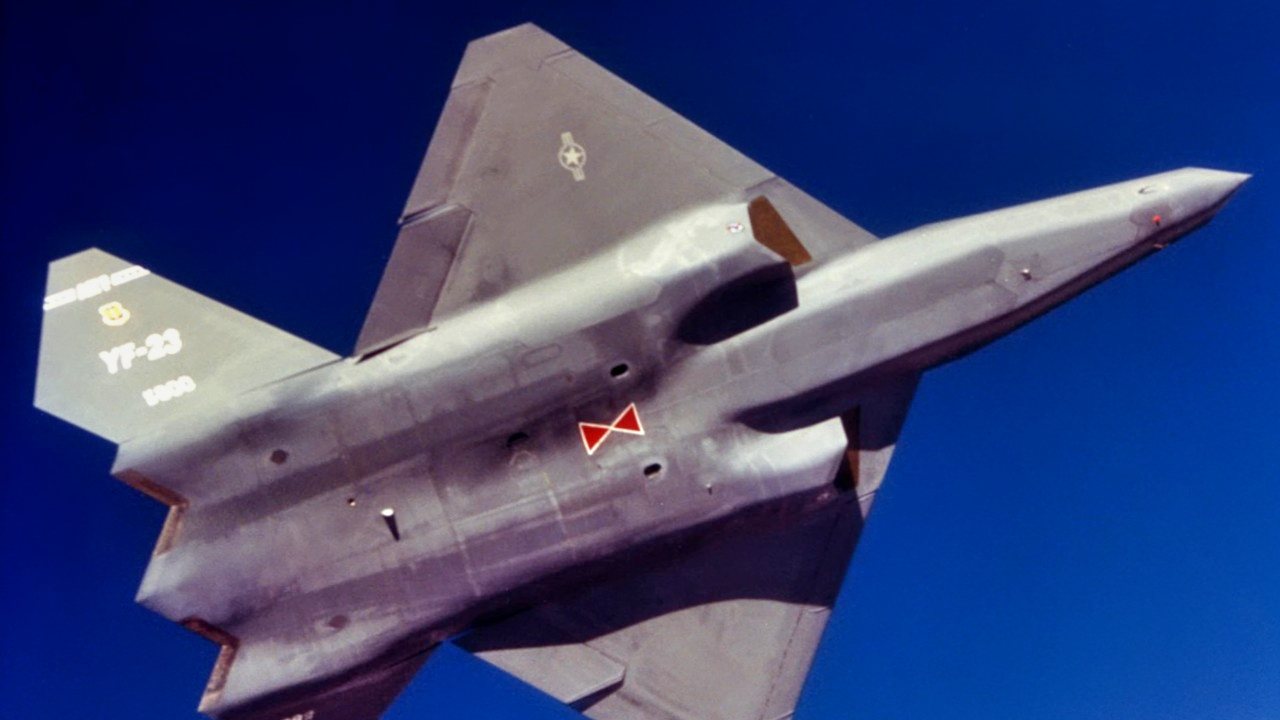
The single-seat aircraft was 67 feet, 5 inches in length; had a wingspan that was 43 feet, 7 inches; and wing area of an impressive 900 square feet.
The YF-23 Comes in A Close Second
The YF-23 was seen to be very evenly matched with the YF-22.
The YF-23 had a top speed of 1,451mph to the YF-22's 1,599mph, but the Northrop design had a longer range and a higher ceiling – 2,796 miles maximum range and a ceiling of 65,000 feet. By contrast, the YF-22 had a range of 2,000 miles and a ceiling of 50,000 feet.
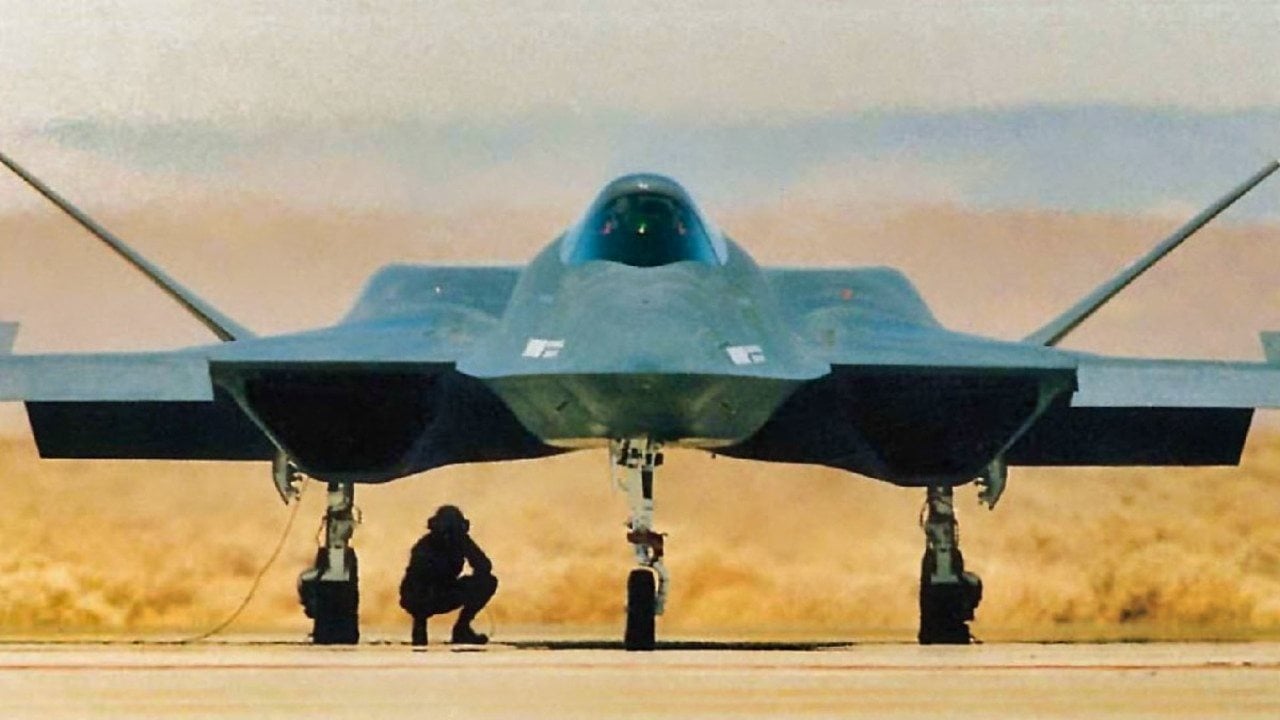
Where the YF-22 had the edge however was in agility, something that is of the utmost of importance in a fighter aircraft. The YF-22 "Lightning II" – later to become the F-22 "Raptor" while the "Lightning II" designation was reused with the F-35 Joint Strike Fighter – was simply better in a dogfight, and that was enough to convince the Air Force that it would be the better of the two.
Both YF-23 airframes remained in storage until 1996, when each was transferred to a museum. As noted, the YF-23A PAV-1 is now in the Research and Development hanger at the National Museum of the United States Air Force. The YF-23A PAV-2 was on display at the Western Museum of Flight until 2004, when it was reclaimed by Northrop Grumman and used as a display model for the YF-23 based bomber, but then returned to the museum in 2010 where it is again on display.
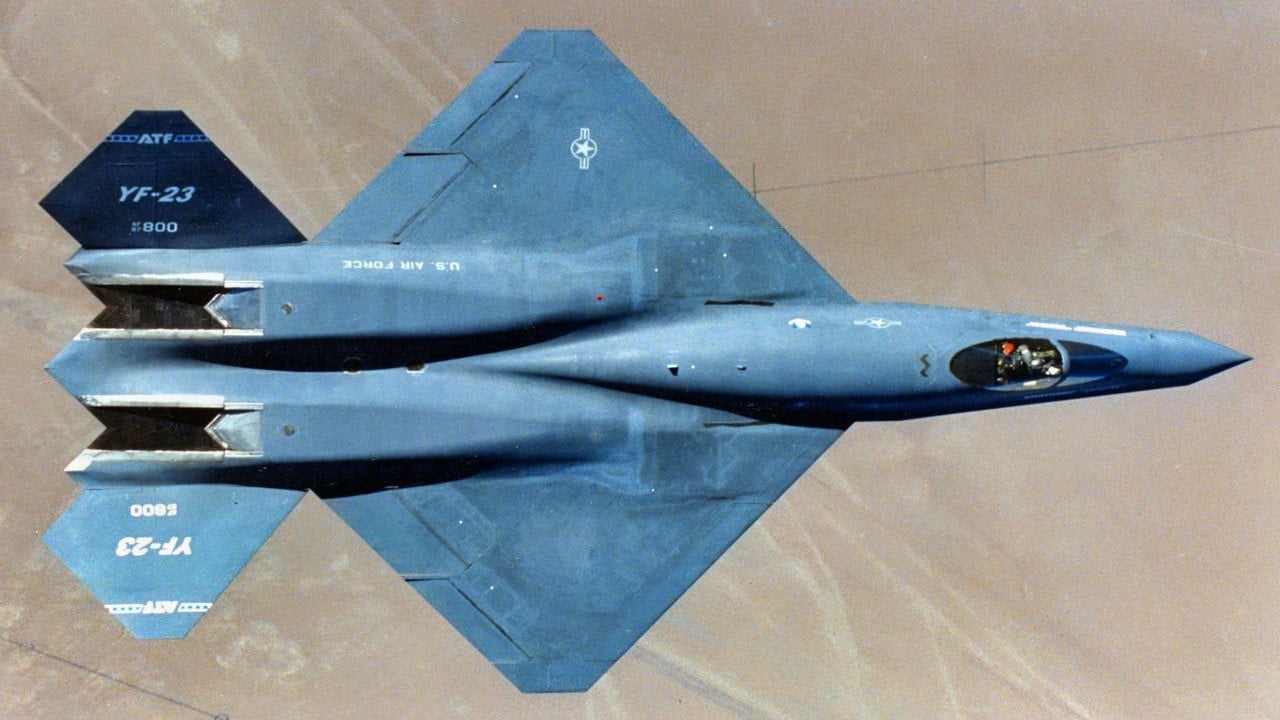
In the end, it wasn't that the YF-23 was a bad design, nor was it really a losing design. It was really just a classic example of where the competition was simply that much better. Yet, as the Lockheed Martin F-22 "Raptor" program was cut short, it could be argued there were no real winners.
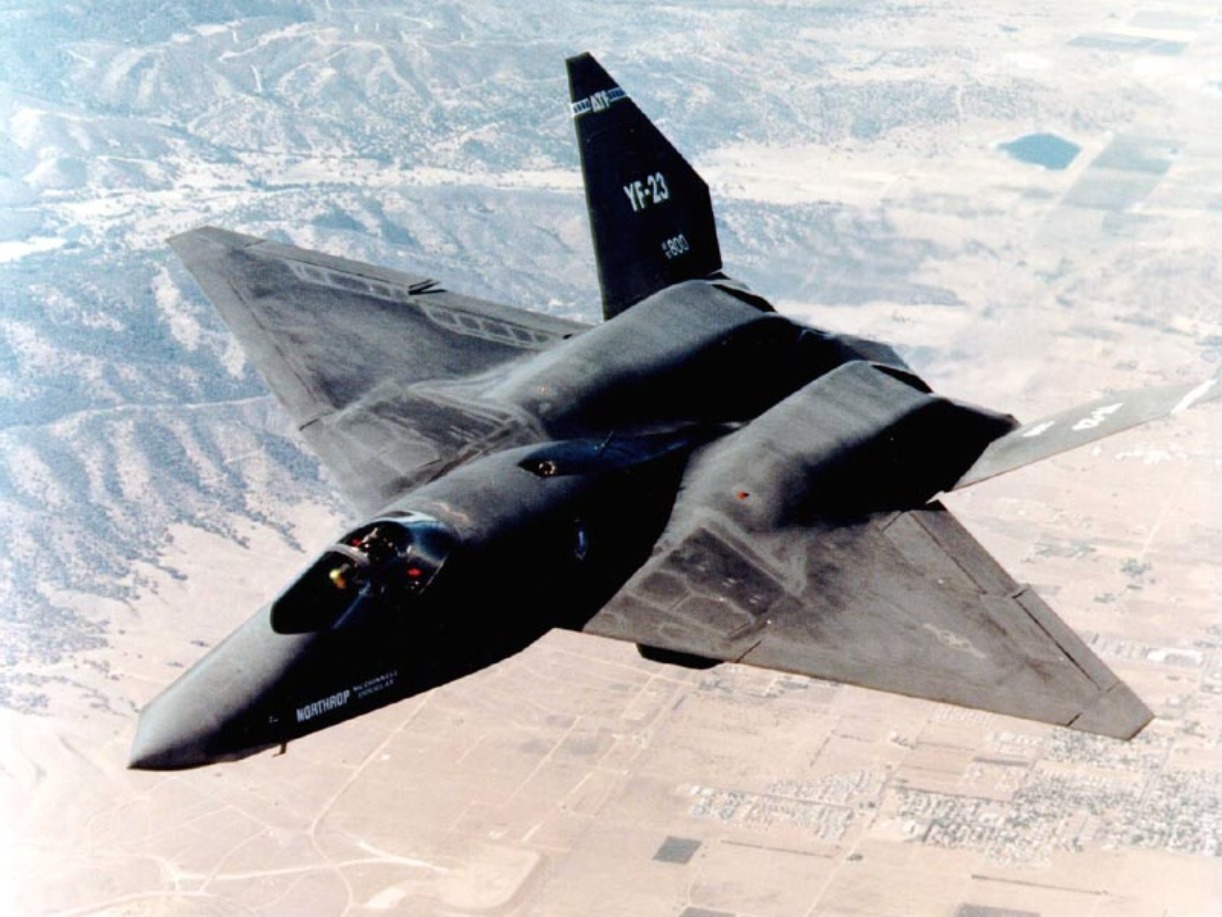
About the Author
Peter Suciu is a Michigan-based writer who has contributed to more than four dozen magazines, newspapers and websites. He regularly writes about military hardware, and is the author of several books on military headgear including A Gallery of Military Headdress, which is available on Amazon.com. Peter is also a Contributing Writer for Forbes.
All images are Creative Commons.


